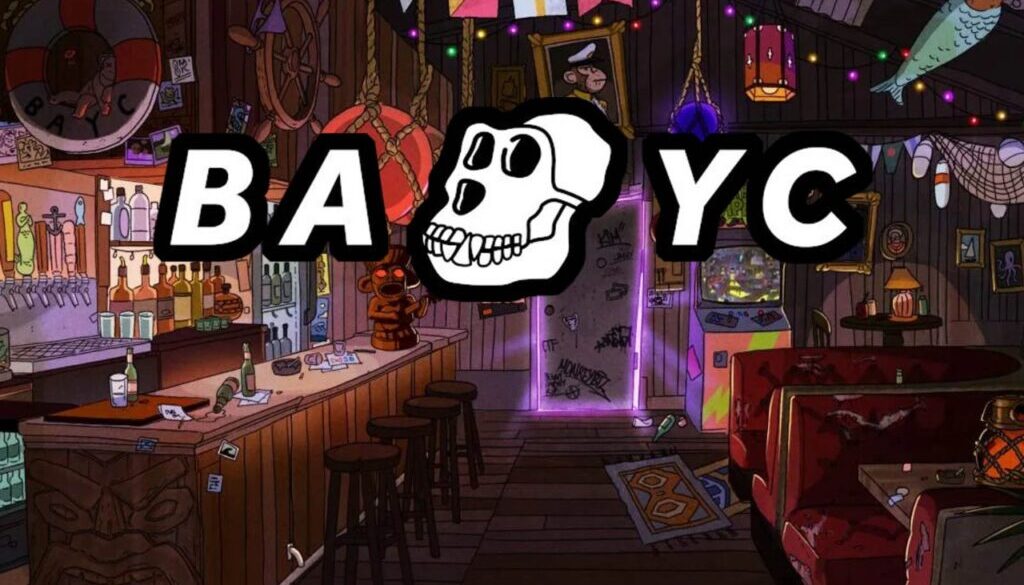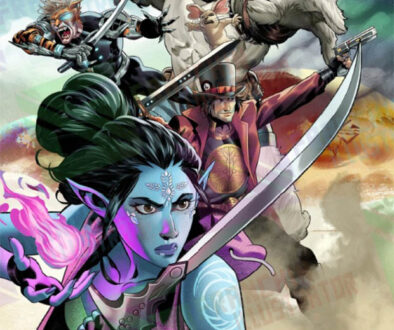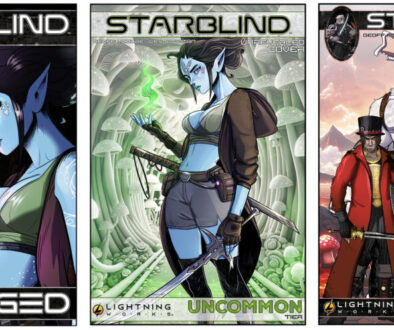The sudden burst in the trade in nonfungible tokens was pretty much a product of the pandemic even though it was part of the slower evolution towards a metaversal world. With so much time spent indoors and online, life quickly shifted online and there was a sudden interest in not only building online personas but also in owning digital assets. The dystopian world of the metaverse appeared to have been pushed forward by several decades.
For many, the logical outlet was cryptocurrencies. Fueled partly by pandemic stimulus checks, billions of dollars were poured into cryptos like Bitcoin, Ethereum, DOGE Coins, LUNA and others.
Soon, the general public began seeing a rise in transactions in a new asset class: nonfungible tokens or NFTs, a crypto-adjacent class of assets consisting of blockchain-based digital art. They soon grew into a collector’s items with people willing to spend thousands or even millions of dollars to acquire NFTs.
Originally dismissed as worthless fads, Ponzis or a silly digital bubble enabled by pandemic stimulus checks, NFTs have since gone to acquire a life of their own and trade in NFTs is now worth tens of billions of dollars. NFT marketplaces and platforms like OpenSea, Rarible, Axie Marketplace and Nifty Gateway are becoming as popular as their crypto marketplace counterparts like Binance. NFTs like the Bored Ape Yacht Club, Moonbirds, Dippies, CryptoPunks, CyberKongz, Doodles, and Decentraland are set to become household names and popular culture icons within a few years.
What is a Non-Fungible Token?
Perhaps, nothing spells NFTs like the images of cool bored monkeys from the Bored Ape Yacht Club (BAYC). They are everywhere and are now almost synonymous with NFTs. In this article, we look at the Bored Ape Yacht Club (BAYC) and how it has gone to define the world of non-fungible tokens.
To understand NFTs, you first need to understand the meaning of fungibility. Something is fungible if it is replaceable by an exact replica. For instance, a dollar note is fungible. Something is non-fungible when it is one-of-a-kind, unique and irreplaceable. In cryptocurrency, a token is simply an asset that resides on the blockchain. A non-fungible token is therefore a unique and irreplaceable asset whose proof of ownership and authenticity is verifiable on a blockchain. The blockchain provides the authenticity and serves as a store of value of the original.
Most non-fungible tokens reside on the Ethereum blockchain. Some NFTs have also been implemented on other blockchains. The Ethereum blockchain serves as a ledger, keeping track of the NFT ownership and transactions.
A New Creator Owned Economy
The emergence of NFTs has spawned a new community-generated and creator-owned economy. NFT is seen as the next evolution of fine art and it is no surprise that some of the leading art dealers have been quick to embrace this phenomenon.
The Ape Culture
For some reason, NFT projects have been synonymous with images of cool apes. Be it Bored Apes, Degen Apes, Aqua Apes, Voxel Monkey or Aqua Apes, earlier images of NFTs were often ape-y. Perhaps the best-known apes of them all were the Bored Yacht Club, those monkeys wearing glasses and cool hats. In recent NFT projects such as Dippies and Moonbirds, new forms of imagery have emerged outside the apeverse. In popular culture, however, images of the BAYC apes have acquired a synonymity with NFTs. That is, when we think of NFTs, the BAYC apes quickly come to mind.
What is the Bored Ape Yacht Club?
This is, perhaps, the best known of NFT projects and images of its grungy bored apes are now equated with the very idea of NFTs. Google “NFTs” and your search results will be inundated with images of the BAYC apes with bored expressions on their faces, wearing different kinds of human clothes.
The Bored Ape Yacht Club was created by Yuga Labs, a Web 3 company founded by a team popularly known by their quirky pseudonyms: Gargamel, No Sass, Emperor Tomato Ketchup, and Gordon Goner.
Although it now appears like they have been here forever, the Bored Ape Yacht Club (BAYC) is a fairly recent phenomenon having launched just over a year ago on April 29, 2021.
The Bored Ape Yacht Club is a collection of 10,000 NFTs that contain cartoon apes and is powered by the Ethereum blockchain.
It has become one of the most successful NFT projects ever. The apes in BAYC are procedurally generated (minted) and every ape possesses unique characteristics and typically sell for as much as millions of dollars.
The unique BAYC ape characters serve as a “membership card” to a decentralized community, granting you access to various members-only benefits such as a private chat room as well as a whiteboard christened “the bathroom” in which BAYC owners can scrawl messages. The graffiti-covered bathroom of the BAYC consists of pixelated walls and a virtual toilet and serves as members-only canvas where people pen different kinds of graffiti, including the obscene.
The Bored Apes grew so popular that they are now owned by top celebrities including Paris Hilton, Jimmy Fallon, Justin Bieber, Kevin Hart, Dez Bryant, Gary Vee, Steph Curry, Eminem, Mark Cuban, and Lamelo Ball among others.
Why Did Bored Apes Become So Popular?
The Bored Ape is one of the most successful NFTs ever and that success has a lot to do with a combination of factors including the intrinsic artistic cred of the apes (this might be debatable but they look visually appealing, or at least visually captivating), gimmicky marketing and the creators constantly providing users a la carte services that make these NFTs worth the investment such as members-only Discord, merchandise drops as well as the ApeCoins which are airdropped to holders of the NFT. The recent Otherside landrush is to immerse NFT holders into the metaverse.
The initial buzz in the BAYC NFTs is attributable to the fact that they were noticed early on and embraced by top celebrities including Paris Hilton, Eminem, Gwyneth Paltrow, Mark Cuban, Snoop Dogg (who has since gone to promote other NFTs including Dippies), Steph Curry, Shaquille O’Neal, and Jimmy Fallon. When top celebrities attached value to the BAYC NFT, the broader crypto community began to attach value to the Bored Apes and the NFTs began to develop their own intrinsic character and value. This is how the trade in art and collectibles work where buyers attach value to the collector’s item because a broader community of collectors and connoisseurs believe the item to be valuable. Put together, these celebrities have hundreds of millions of followers and their embrace of BAYC thrust the NFT right onto our faces and increased its perceived value as a collector’s item.
Just as top celebrities were embracing the BAYC NFT, the NFTs got another lease of life when top fine art auction houses expressed interest. A Sotheby’s auction of 101 BAYC tokens netted $24.4 million. Another top auction house, Christie’s, auctioned four BAYC apes for $12 million. A collector also purchased a single BAYC token for $2.65 million around the same time on OpenSea. In a few weeks, another BAYC auction of Ape number 8,817 netted $3.4 million. These sales were widely publicized and were noticed by the wider crypto community.
BAYC apes didn’t just grow popular because of strong interest and market response. The creators, Yuga Labs, have also gone a long way in tying in plenty of perennial perks and freebies that users find appealing.
The creators created some utility in the NFTs. A BAYC NFT isn’t just a jpeg with a funny-looking bored monkey. It is also a digital identity that bestows on its owner commercial usage rights. A BAYC owner can sell different kinds of spinoff products off their BAYC ape. The BAYC token also serves as an ID card that grants its owner access to a private chat room and the so called “bathroom” where you can gage the sentiment of the crypto community from the graffiti scrawled on the whiteboard.
In fact, the perks have become so popular that they have made the Bored Ape Yacht Club one of the most coveted and most rewarding memberships.
Yuga Labs continuously taps into new ways to create value for BAYC members by minting out new opportunities that the owners of the tokens can unlock. For instance, there have been treasure hunts where collectors win up to 5 ETH and an extra ape.
There is also the annual Ape Fest that was announced last year and which takes place between October 31st and November 6th and features various acts including a yacht party, in-person gallery party, merch pop-up, warehouse party, as well as a charity dinner in New York. Several other partnership tie-ups are also in the works such as musical acts with artists.
All of these factors have added value to the token and led to the wide popularity of Bored Apes.
Spinoffs
Bored Ape Yacht Club has gone to churn out other spinoffs which have further improved the worth and popularity of the NFTs.
There is, for instance, the pets for apes that it created through the Bored Ape Kennel Club (BAKC) NFT. The BAKC NFT collection trades on the Ethereum network in the form of ERC-721 tokens. Like the BAYC, the BAKC consists of 10,000 NFTs. These are gifted free of charge to BAYC holders. 9600 out of the 10,000 Bored Apes owners have already claimed their four-legged companions and the remaining 400 dogs were never claimed by BAYC owners and were subsequently released into the swamp never to be seen again, according to BAYC.
The Bored Ape Kennel Club NFT is doing quite well and recently hit a floor price of more than 12 ETH on the NFT marketplace OpenSea, an all-time high (ATH). This is a considerable rise in the worth of this spinoff NFT given that they were initially dished out for free.
Trading of the BAKC NFTs attracted a 2.5% royalty fee in the first six weeks of release. Yuga Labs donated the proceeds from the trade to animal shelter charities.
Like the ‘parent’ BAYC NFTs, the BAKC are becoming increasingly lucrative NFTs with a rare one with gold fur recently trading for $104,000. Only 1% of BAKC dogs have gold furs and this high rarity fetches a premium in the secondary NFT marketplaces! The minting of the BAKC was randomized so only the uber-lucky BAYC holders got the high rarity club dogs.
Another spinoff of the Bored Ape Yacht Club is the Mutant Ape Yacht Club (MAYC). According to the description in the BAYC website, the Mutant Ape Yacht Club consists of a collection of 20,000 Mutant Apes and they can only be created when an existing Bored Ape is exposed to a vial of Mutant Serum.
Like the BAKC, the MAYC has been highly successful. Thanks to their rarity, membership perks and the exclusive community access that they provide, they have become a highly valuable NFT collection. Half of the MAYC NFT collection was publicly auctioned while the other 10,000 were minted by existing BAYC holders by exposing their Bored Apes to a “vial” of a “Mutant Serum” airdrop.
Every Mutant Ape that has been created from the existing Bored Ape has the traits of the original ape although it exhibits some mutated variations.
Beyond rewarding existing BAYC holders, the MAYC NFT collection has provided a low barrier to entry for new comers into the prestige and well established BAYC community thereby roping in even more users into the BAYC ecosystem.
At launch, the first 10,000 MAYC NFTs netted $96 million in just an hour. The remaining 10,000 were airdropped to BAYC holders by exposure to “Mutant Serum.” The serums are also a spinoff of the BAYC and they now fetch tens of thousands of dollars on OpenSea.
BAYC Spawns More Business Opportunities
Ownership of the intellectual property and commercial reproduction rights of a BAYC NFT has inspired other investments in the community by holders of the NFT.
There have been dance parties, new merch and other creative output which are all inspired by the images of a particular ape. A BAYC holder even opened a cocktail bar in New York that is linked to the visage of their BAYC ape.
Perhaps, one of the most elaborate ventures inspired by a BAYC is Jenkins’ Writer’s Room. The owner of BAYC #1798 christened the project Jenkins the Valet and started fleshing out Jenkins’ backstory as the Yacht Club’s valet. It is premised on the concept that Jenkins wants to narrate the story of all the other apes that are in the club, including all their triumphs, foibles and exploits among others. Jenkins has presumably witnessed and is intimately familiar with the misadventures of the BAYC members.
To steer the narrative forward, the creators of Jenkins the Valet have gone on to create a new NFT that provides owners with a one-time membership into the project’s “Writer’s Room”. BAYC members can join the Writer’s Room to participate in writing the story of the valet. The project even allows BAYC owners to include their own personal stories in the BAYC world.
A recent BAYC application is the opening of a new BAYC-themed fast-food restaurant in Los Angeles called Bored & Hungry. The restaurant was opened by the startup Food Fighters Universe.
The same startup has now opened a new NFT-themed restaurant in New York called Bombay’s Sweet Exploration which was inaugurated by one of NFTs’ most ardent celebrity supporters – Snoop Dogg. The restaurant will reportedly offer patrons an immersive dessert experience. Snoop provided his BAYC avatar for the NFT-themed restaurant. The branding and the décor in the restaurant are inspired by both Bored Ape and Mutant Ape Yacht Club NFTs that are owned by the creators of the restaurant. Further extending the NFT theme, the startup is even planning to roll out its own NFTs that will provide its holders a number of perks in the restaurants.
As the NFT trend continues to take root, we are going to see similar NFT-themed businesses springing up across the globe.
ApeCoin AirDrops
The Next chapter in the evolution of the Bored Ape Yacht Club was the release of its club-affiliated cryptocurrency called the ApeCoin (APE).
Millions of ApeCoins were airdropped by the newly formed decentralized autonomous organization (DAO), ApeCoin DAO, in March 2022 to BAYC owners. At launch, the coin was retailing at $10.36 but it has since dropped to $4.26 as at the time of writing. As at the time of writing, $APE has a trading volume of just over $279 million.
Yuga Labs also created the Ape Foundation to help manage the ApeCoin DAO’s governance process as it scales the heights as a new major cryptocurrency player. ApeCoin is already ranked among the top 50 cryptocurrencies by market capitalization which is impressive considering there are more than 13,000 cryptocurrencies in existence today and it is a relatively new token.
Up to 62% of the APE supply is allocated to the ApeCoin Community. 15% of the supply is located to BAYC, MAYC and BAKC holders. APE is traded in the leading crypto marketplaces like any other cryptocurrency so if you are unable to claim any ApeCoin by virtue of being part of the greater BAYC-MAYC-BAKC community, you can still do so by buying the coins in the secondary marketplaces such as Binance, Uniswap, Bitfinex, Coinbase Exchange, KuCoin, Okx, and Huobi.
Yuga Labs hopes that ApeCoin will be the preferred token in its upcoming metaverse ecosystem. ApeCoin represents the evolution of the NFT space. In less than two years, what was deemed as silly cartoon images of monkeys have evolved into a vast ecosystem of content, merch, events and a tradeable token with a market cap of more than $1.2 billion.
See You On the Otherside: BAYC and the Metaverse
The next evolution in BAYC’s journey is the merging of NFTs with the metaverse.
In May this year, Yuga Labs launched a metaverse landrush with the Otherside lot sales that netted the company over $286 million. The Otherside metaverse project is an ape-centered metaverse and lots were sold as Otherdeeds NFTs. Yuga Labs made more than 55,000 NFTs available and they were only purchasable using ApeCoin (APE). A single Otherdeed sold for 305 APE which at launch time a month ago was worth roughly $6,000.
The Otherdeeds are the titles to virtual plots in Yuga Labs’ upcoming 3D social space, effectively a metaverse.
The BAYC ecosystem is a creator-verse that keeps on giving and it is difficult to tell what it will spawn next. What is clear is that it is slowly growing into a new form of popular culture for the metaverse age that will rival or even surpass similar trends we have seen in the past.



